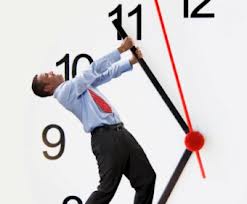This isn’t a commercial for AutoZone. Neither is it a post just about bicycling, but I’m going to start there.
While winding up a recent bike ride, I hit a hill that caused my legs to burn. When I’d experience that burning sensation in the past, I’d get temporarily discouraged about riding because the pain literally prevented me from achieving my distance or speed goals that I set for the day.
My attitude about that feeling, and the reflexive tendency to avoid future pain-inducing rides flipped 180 degrees when I read Younger Next Year by Chris Crowley and Dr. Henry S. Lodge. In the book. the authors describe the benefits of that muscle pain for developing strength and slowing down the aging process.
Reaching Our Limit
During normal exercise, our body shunts oxygen to our muscles so they can continue to perform. We breath harder so our bodies can produce this energy aerobically, that is with oxygen. When we exceed a certain exercise threshold, our bodies no longer can produce enough energy with oxygen to fuel our muscles, and so it begins an anaerobic process of breaking down glucose, producing a substance called lactate which allows energy production to continue. This lactate, or lactic acid can accumulate for short periods of time (about 1-3 minutes), but in doing so, it creates that burning sensation that eventually forces us to slow down, stop overworking our muscles and return to aerobic energy production. In my case during my ride, though, it also caused me to question whether or not I want to ride again!
Pushing Past Our Temporary Limits
Here’s what I learned. The more and the harder I ride—the more I pushed myself anaerobically when my muscles were screaming—the higher that aerobic threshold goes. It’ll take longer and require more strenuous activity to reach that anaerobic point, enabling me to ride farther and faster over time. In other words, the last ride of the season is not as painful as the first. The longer we stay in this anaerobic zone—a zone of development—the stronger we get over time. The same is true intellectually.
The Link Between Exercise and Learning
In Brain Rules, John Medina writes that regular exercise improves problem-solving and memory because it sends the brain more oxygen and glucose. This brain food stimulates a growth protein that keeps our existing brain cells firing, and also encourages the growth of new cells in a region of the brain associated with memory and learning. In short, exercise stimulates learning.
The Zone of Proximal Development
But there’s another zone that more precisely links this example to learning. Lev Vygotsky introduced an optimal level of rigor where a lesson is neither too hard nor too easy. He called it [ii]the zone of proximal development. It is a level of proximal difficulty between where a student would be neither bored (because it’s too easy) nor frustrated (because the work is too difficult). You know when you’re in the zone when you require some assistance by a professor or in study groups to understand the material, but you’re yet to do the work independently. Like the aerobic threshold, you experience some stress of not knowing the material, particularly if you’re used to “getting it” right away.
The Zone Moves Up Because You Get Smarter
The great news is that the zone moves up linearly with effort and practice. Over time, like the physical threshold, the “intellectual burning sensation” will subside at the same level of challenge because you’ll have mastered the work once you put in the effort. To keep learning, you have to embrace increasingly challenging work through deliberate practice otherwise it would get too easy (see my post about How to Become an Expert: https://karlwreid.com/2013/06/). You get smarter faster the longer you stay in the zone.
Avoiding the Zone will Hurt You
Some students shy away from the zone and stay with easy work. They avoid embracing more difficult coursework because not knowing something is unnerving and uncomfortable for them. They’ll choose the mainstream math class because the advanced course is too painful. They’ll avoid going to a certain college for fear of having to work hard. These students will never get over the proverbial hill. They’re the ones who show no growth in knowledge and skills in college as the researchers found in Academically Adrift. If that’s you, I have one message for you: No Pain, No Gain.
Like me, I hope you too make an attitude shift about strenuous exercise. Likewise, embrace your intellectual challenges. Not knowing something and requiring assistance is a means to an end (mastery), and not an indictment on your ability. As you get into the zone, you’ll get stronger and smarter. The adage is true: No Pain, No Gain!
[i] Graphic copied from Victoria Department of Education and Early Childhood Development: www.education.vic.gov.au




[…] Getting help should be embraced, a theme that I hope I drilled home in previous posts (https://karlwreid.com/2013/08/19/no-pain-no-gain-get-in-the-zone/). […]